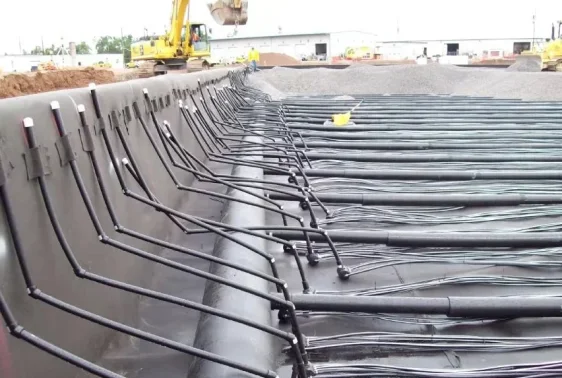
Aerated wetland system (AWs) was developed and patented with trademark of Forced bed aeration. These are advanced version of CWs that are more efficient in removing wide range of pollutants such as organic matter, suspended solids, nutrients such as nitrogen and phosphorus, pathogenic micro-organism, heavy metals, emerging contaminants and microplastics.
The system helps to remove a wide variety of pollutants from wastewater such as…
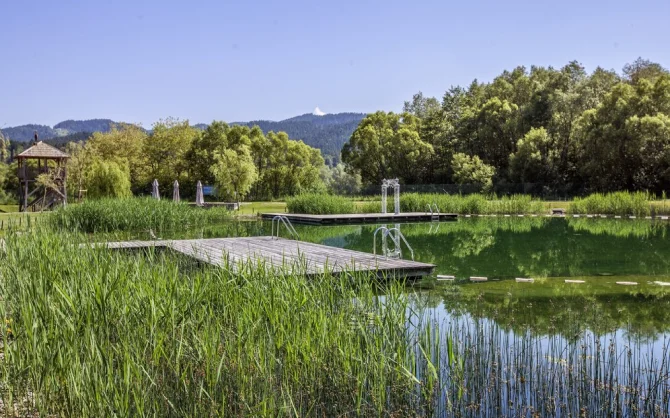
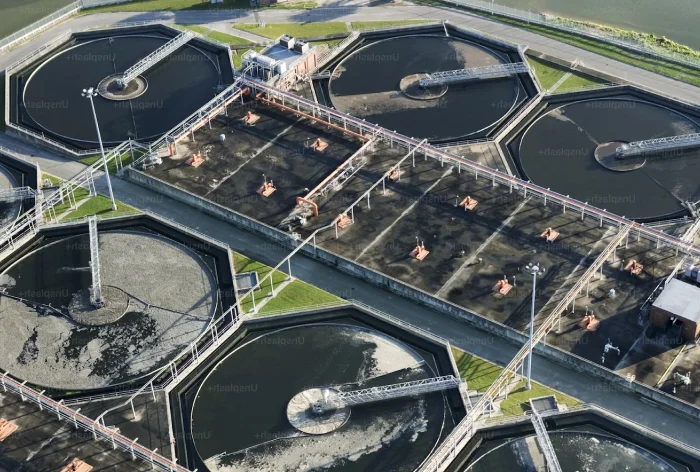
Aerated Wetland Systems has a wide range of application such as treatment of Municipal wastewater, effluent from different industries such as textile, dairy etc. , treatment of landfill leachate, effluents from hospitals, chemical laboratories.
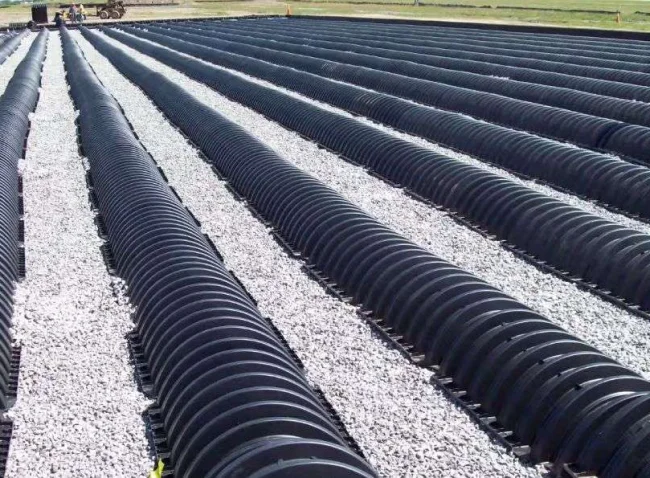
Aerated Wetlands have been in use for over 20 years in Europe and North America, advances such as wetland aeration have allowed the technology to be adapted in India, where the favourable climate allows for maximum benefits. In UK, more than 50% of the non-operational passive CW system has been retrofitted to aerated CW system.
The major driving force behind this move has been increased treatment capacity with same footprint, capital asset, mitigated risk of clogging and extended life span. Further other vital advantage is the flexible aeration flow adjustments as per requirements which eases in tackling fluctuating biochemical oxygen demand and nitrification loads especially due to weather based events (Nivala et al., 2020).
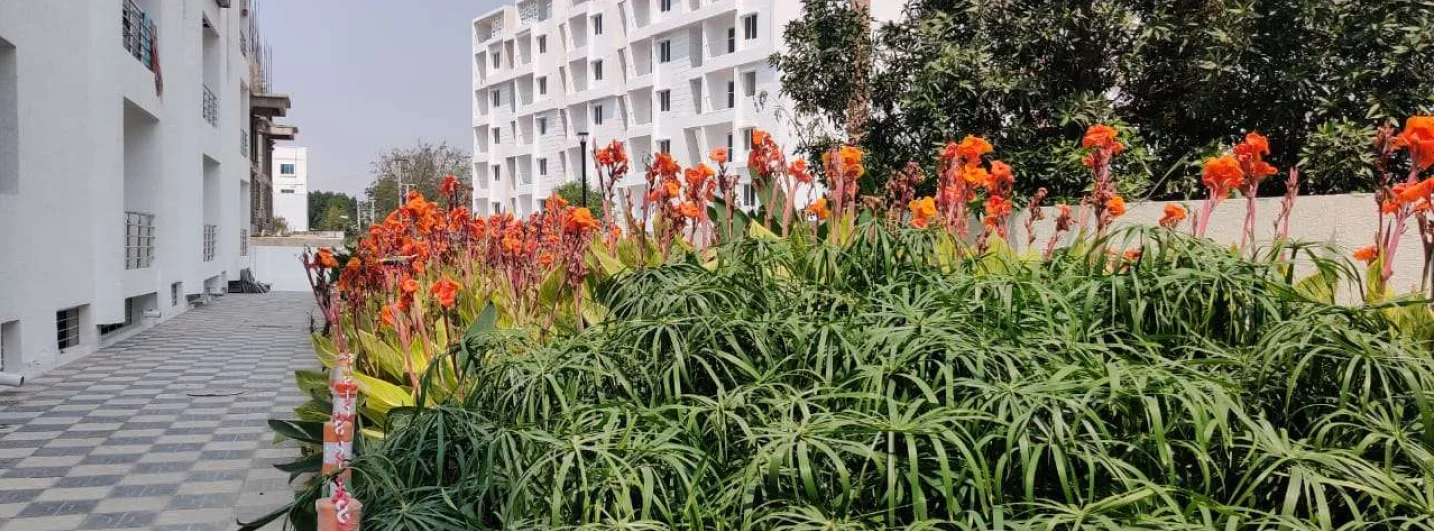
There are numerous benefits of using CWs over conventional wastewater treatment systems. To list a few…

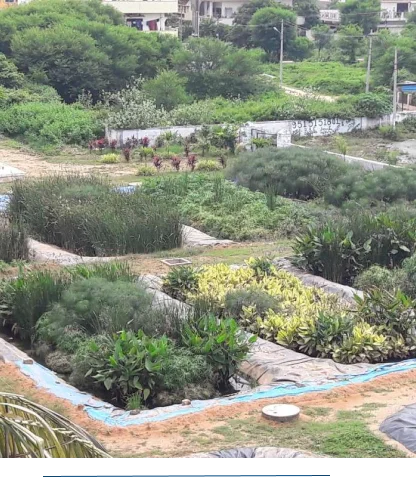
The wastewater flows beneath the surface of media which is aerated using air distribution system that increases the availability of oxygen in the system that further enhances the treatment performance of the system.
Due to continuous supply of oxygen from the root zone of specific macrophytes further reduces the cost of energy and maintain the dissolved oxygen concentration throughout the treatment process.
Moreover, due to continuous oxygen transfer enhances the removal of organics, nutrients and other pollutants from the system. The type of macrophytes selected provides high removal efficiency due to the proliferation of microbes and provides an aesthetical view in the surrounding of the system. AWs are the flexible system and can be customize based on the on the strength and source of effluent as a primary, post, and hybrid treatment system.
The aeration effectively fuels the aerobic microbial degradation improving treatment capacity by up to 10 times per unit area compared to passively operated systems. Aerated wetlands are 3 to 5 times smaller than conventional passive wetlands. The reduced area saves construction costs and means that wetlands can be used in limited land areas. The systems do not produce excess sludge like conventional mechanical treatment plants and only use about 10% of the energy required for a comparable activated sludge process.
Hence, the 'Total Cost of Ownership' (TCO) of Aerated Wetland Treatment systems is quite lower compared to conventional mechanical systems in longer term. This TCO is a key factor in evaluating the suitable technology if an organization needs to operate a Sewage Treatment Plant (STP) or Effluent Treatment Plant (ETP) for 15/20+ years.
CWs are engineered systems that utilizes the natural components such as plants, soil and microorganism in order to treat wastewater. Here the systems are designed in replication to natural treatment system but worked in a controlled condition. The treatment system which serve the purpose of treating waste from different sectors such as Residential, Industries and Educational Institutions.
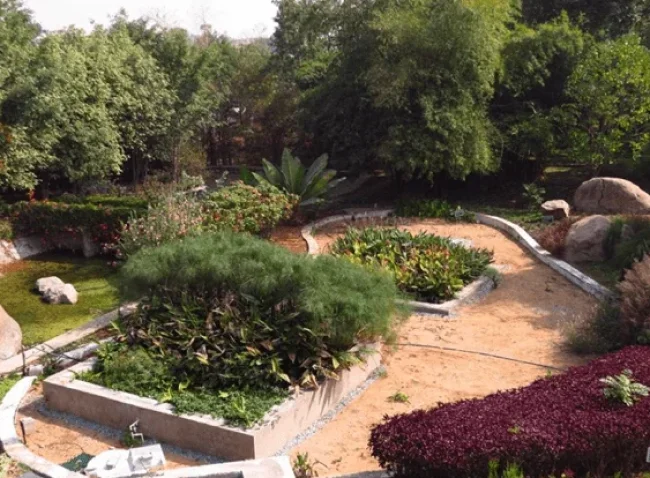
In order to construct a sustainable residential community a number of components need to build up and function well such as good quality housing apartments, efficient transport, children parks, green area, security, community center and a decentralized waste management facility. Water used in a community includes drinking water, rain water, ground water and wastewater. Wastewater coming from the housing complex are referred to as grey water that includes wastewater from washroom, kitchen, hand basins and black water that includes wastewater from toilets.
Wastewater from residential complex requires proper treatment and treated water can be used for saving freshwater sources and can be used in recreational activities. In this context, CWs technology can be used for treating Grey and Black water from residential complex due to low energy requirement, cost effective system with no odor and harmful gas emissions.
Wastewater generated from industries has high concentration of physical, chemical and biological pollutants based on the type of industries. CWs are very efficient in removing pollutants from industries such as Textile, tannery, oil, acid mine drainage, pulp and paper, food industries such as coffee, potato slaughter house, distillery, cheese, winery etc. For treatment of industrial wastewater, CWs can be used as primary, secondary or hybrid treatment system based on the strength of wastewater. In order to enhance the effluent quality specific macrophytes are used along with the addition of certain microbial consortium.
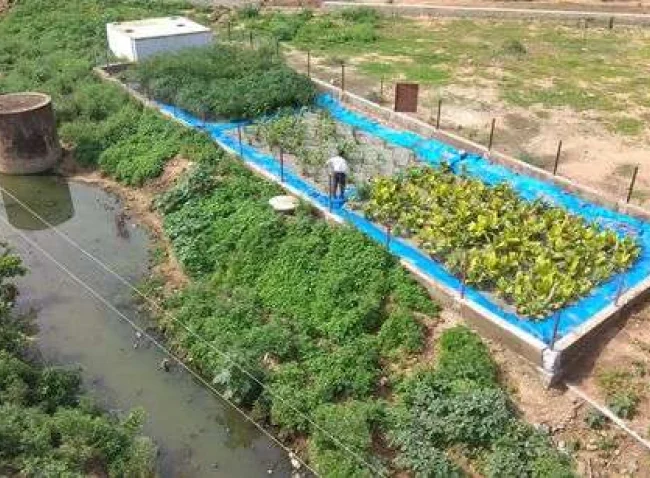
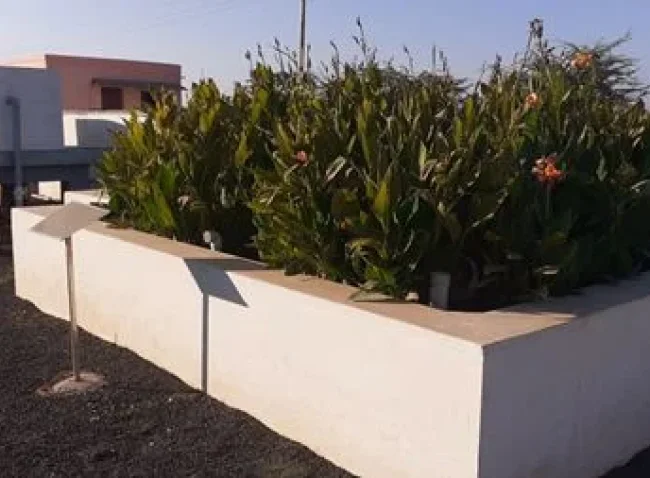
The educational institute is a full fledge community center that includes schools, departments, hostels, houses, mess club, swimming pool and other functional wastewater coming from a educational institute includes black and grey water, effluents from different laboratories, washing area and mess.
Generally, there are high volume of wastewater present due to presence of large community of teachers and students and other members from functional activities going on inside the campus. Therefore, there is a need of sustainable and decentralized wastewater treatment system. CWs can be proved to be a efficient treatment system due to beautiful biodiversity, no odor, low energy consuming and cost effective technology.